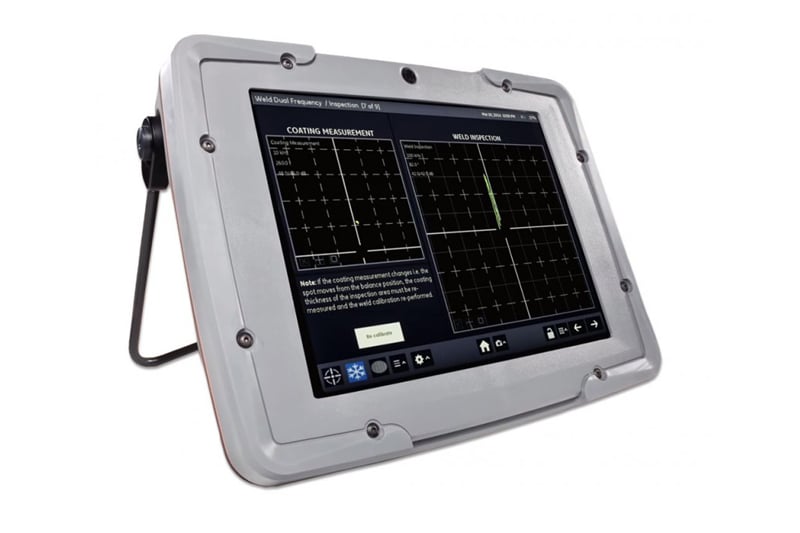Evaluating Defects Using Eddy Current Testing

Many industries rely on Non Destructive Testing (NDT) as a vital quality assurance, safety and asset integrity management tool.
NDT is used throughout all stages of manufacturing to test raw materials, components, welded structures and assemblies for defects or flaws and importantly, it does so without impacting on their future usefulness or integrity in any way.
One of the most widely used techniques for detecting and evaluating flaws is Eddy Current Testing (ECT), and although the technology has been around for decades, ongoing advances and improvements have ensured that it remains a highly accurate, reliable, sensitive and versatile resource.
The basics of Eddy Current
Eddy Current uses the principle of electromagnetic induction to find hidden sub-surface cracks, defects and corrosion and to categorise certain material properties including thickness measurement, material identification and heat treatment condition. EC can only be used on conductive materials such as copper, aluminium and steel.
An eddy current probe produces an alternating electrical current which flows through a wire coil to generate an oscillating magnetic field. The circular current is created when the coil comes close to the object or area under investigation – and any defects like a near-surface crack, corrosion or changes in the material’s properties will interrupt or alter the eddy current. The EC instrument monitors the outputs from the probe and then displays and plots the changes, enabling a trained operator to identify the exact nature of the problem.
Single eddy current probes are used to test smaller areas, whilst multiple probes are used in eddy current array systems for testing larger areas. Probe selection is critical and choosing the right probe for each application is imperative to optimise test performance and ensure accurate results. Although EC is useful for evaluating all metals for defects, the depth of penetration of the eddy currents will vary according to the conductivity and permeability of the metals.
A huge diversity of industries including engineering, space, nuclear, power, chemical, petrochemical and energy make use of this quick, effective, reliable and accurate testing method for evaluating their structures, processes and products for defects to ensure ongoing safety, quality and optimum asset management. It’s also an important technique for testing whether a material’s conductivity has been compromised as a result of being subjected to extreme heat and for evaluating the integrity of welds where metal structures have been subjected to critical loading.
Advantages of Eddy Current Testing for Defect evaluation
- Virtually instant results
- Item can be tested without being touched (contactless)
- Highly sensitive
- Extremely fast (less than 1m/s)
- Can be used underwater
- Can be used to scan welds through paint and other coatings
- Can detect tiny cracks (as small as 0.5mm deep and 5mm long)
- Couplant-free testing
- Can be automated
- Real-time analysis
Eddy Current is an indispensable tool for detecting and evaluating flaws and defects in certain assets and equipment manufacturers have responded to industry’s changing requirements and expectations by developing instruments that not only deliver enhanced detection capabilities but which offer substantially expanded functionality too.
Take the Mentor EM for example, the cutting-edge in eddy current instruments that features superb signal-to-noise ratio for clean and sharp signal, high-resolution display and user-designed-application workflows with integrated Wi-Fi. It also has a range of specialized probes including absolute pencil probes for surface scanning, reflection probes for subsurface inspection, weldscan probes for weld inspection, conductivity probes for heat treatment verification and metal grade sorting and rotating scanner probes for fastener hole inspection.
At Nexxis, we offer the most innovative solutions through technology. Get in touch with our experts at Nexxis to discuss a collaboration for your latest project.

